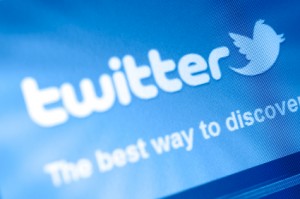Social Media Marketing: 21 Tips for Smarter Tweeting
 Marketers everywhere are discovering the value of Twitter for sharing content and insights with customers and prospects and creating top-of-mind awareness.
Marketers everywhere are discovering the value of Twitter for sharing content and insights with customers and prospects and creating top-of-mind awareness.
I used to be skeptical of Twitter but I’ve become convinced of its marketing power. As I approach my 1,000th tweet on Twitter as @jeangianfagna, here are 21 tips I’ve learned for using Twitter in a smart marketing strategy:
- Write a great company description. You have 160 characters to describe yourself. Use them all to say something interesting and show how you benefit your customers.
- Aim for the briefest copy in your tweets, ideally 115 characters or less, so that if your content is retweeted, your identity (RT: @companyname) will be preserved along with the full text of the original tweet.
- Use your company logo as your profile visual.
- Create a custom background for your Twitter page that reflects your brand, states your key value proposition, and lists your website and social media addresses.
- Avoid self-promotion. Helpful information about using your products is valuable; a sales pitch is a turnoff.
- Curate content. Find and share information from other sources – the news media, bloggers, and other social media participants – that your followers will find valuable and interesting.
- Include links to content in the majority of your tweets and use a URL shortener like bitly.com to reduce the number of characters required for a link.
- Add your point of view to content you share from others. Tell your followers why they should read what you’ve just posted or visit a link.
- Be active but don’t overdo it. I recommend posting tweets at least three to four times daily, but also being careful not to over-post. Keep tabs on the volume of tweets in your industry to gauge how much is too much.
- Welcome new followers. You can set up an automated welcome message, though a personal message is more effective. Suggest a visit to your website, blog, or Facebook page in your welcome message.
- Thank those who retweet your posts or mention you via a direct message or tweet.
- Follow-back people who follow your company if they have a clear interest in your industry and are posting on related topics.
- Follow reporters in the news media who cover your industry.
- Follow your competitors.
- Check who’s following your competitors. Review their profiles and follow key tweeters; many will automatically follow you back. Retweet their content if it’s interesting.
- Create lists of people and organizations you’re following on Twitter. Tweet your lists to show people who influences you.
- Use a Twitter management tool like HootSuite or TweetDeck to manage tweeting and to time your tweets for delivery on weekends and in multiple time zones.
- Use and follow hashtags (#) related to your industry to flag your posts for followers of these topics and see who’s posting information on topics that interest you.
- Use conference hashtags to send tweets from conferences and trade shows you attend.
- Use the #FF (#FollowFriday) hashtag on Fridays to tell your followers about tweeters you recommend.
- Have a plan and a process in place to respond quickly to negative tweets about your company.
Final Tip: Take Twitter Seriously
As a marketing consultant who develops marketing strategies, I believe it’s time for every marketer to take Twitter seriously. I’m encouraging my clients — even business-to-business (B2B) marketers — to view Twitter as an effective way to share information, connect directly with prospects and customers, and spot trends.
My final tip: Get on the Twitter bandwagon. Start by following your industry, then join the conversation. I think you’ll soon see why Twitter should be part of your smart marketing strategy.





Pingback:Google Alert – social media marketing strategies | Relativity Internet and Social Media Marketing Blog
jeangianfagna
Thanks for sharing my blog – appreciate it!
Pingback:Social Media Marketing: 21 Tips for Smarter Tweeting | Smart … | Best Twitter Marketing Zone
dieta
The Twitter API started as a basic wiki but has now evolved into a detailed developer site that a savvy marketer can read through and use to determine what information might be available for a developer to use on a future marketing project. Understanding what information is available will help your determine if it is worth working with a developer to pursue the project further.You can also check out the to see how you can build applications and integrations using data from HubSpot.For Example If you wanted to show tweets on your website that included mentions on Twitter to articles from your blog then you would need to understand if you could request tweets with only specific URLs from the Twitter API. .I use a site to pump news blips into Twitter and then I used Twitters RSS feed to pump that into a site that I did.
Jessica Godsey
This article was very helpful and to the point for using Twitter as a business. I am just starting out on my Social Media Marketing adventure and looking to contract out my services to help small businesses get ahead. There is so much SMM information out there and platforms being developed so quickly I feel like I am behind from the start. Again thank you for a great educational article!
jeangianfagna
Thanks, Jessica, for your comments. I’m glad you found the article helpful. I hope you won’t feel like you’re too far behind-one of the great things about Twitter is how easy it is to figure out once you start working with it. The more time you spend with it, the more it makes sense, and you’ll be able to quickly learn what works and what doesn’t. Good luck with your social media marketing!
https://twitter.com
https://twitter.com
Social Media Marketing: 21 Tips for Smarter Tweeting | Gianfagna Strategic Marketing